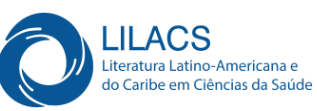Life’s Projects Scale for Adolescents: evidence of content validity
DOI:
https://doi.org/10.5433/2236-6407.2019v10n1p20Keywords:
life’s projects, content validity, psychological assessment, kappa coefficientAbstract
The thematic of the life projects of adolescents has been shown relevant in Psychology, specifically in Developmental Psychology. Faced with the lack of instruments that have this objective, the present study consisted in the investigation of the evidence of content validity of the Scale of Life Projects for Adolescents (EPVA), in development. Five experts on the subject acted as judges, classifying the 116 items of the instrument in seven dimensions: affective relationships, study, work, positive aspirations, material goods, religion / spirituality and meaning of life. The analysis of the coefficients of agreement showed the adequacy of the items, being possible to maintain 88% of the initial scale. Analysis of Kappa coefficient showed a concordance index above 0.75 for all judges. The results pointed to the adequacy of the scale to the construct and dimensions that it intends to evaluate.
Downloads
References
Alves, G. A. S., Souza, M. S., & Baptista, M. N. (2011). Validade e precisão de testes psicológicos. In R. A. M. Ambiel, I. S. A. Rabelo, S. V. Pancanaro, G. A. S. Alves, & I. F. A. S. Leme (Eds.), Avaliação Psicológica: Guia de consulta para estudantes e profissionais de psicologia (pp. 109-128). São Paulo: Casa do Psicólogo.
Araújo, U. F., Arantes, V. A., Danza, H. C., Pinheiro,V.P. G., & Garbin, M. (2016). Principles and methods to guide education for purpose: A Brazilian experience. Journal of Education for Teaching, 42(5), 556-564. https://doi.org/10.1080/02607476.2016.1226554.
Beckstead, J. W. (2009). Content validity is naught. International Journal of Nursing Studies, 46, 1274-1283. https://psycnet.apa.org/doi/10.1016/j.ijnurstu.2009.04.014.
Bock, A. M. M., & Liebesny, B. (2003). Quem eu quero ser quando crescer: Um estudo sobre o projeto de vida de jovens em São Paulo. Em S. A, Ozella (Ed.), Adolescências construídas a visão da psicologia sócio-histórica (pp. 203-222). São Paulo: Cortez.
Bronk, C, K. (2014). Purpose in life. A critical component of optimal youth development. Netherlands: Springer.
Bundick, M., Andrews, M., Jones, A., Mariano, J. M., Bronk, K. C., & Damon, W. (2006). Revised youth purpose survey. Stanford, CA: Stanford Center on Adolescence.
Cardoso, C. P., & Cocco, M. I. M. (2003). Projeto de vida de um grupo de adolescentes à luz de Paulo Freire. Revista Latino-Americana de Enfermagem, 11(6), 778-785. http://dx.doi.org/10.1590/S0104-11692003000600012.
Crumbaugh, J. C. (1968). Cross-validation of Purpose in Life test based on Frankl’s concepts. Journal of Individual Psychology, 24, 74–81.
Crumbaugh, J. C., & Maholick, L. T. (1964). An experimental study in existentialism: The psychometic approach to Frankl’s concept of noogenic neurosis. Journal of Clinical Psychology, 20, 200–207. https://psycnet.apa.org/doi/10.1002/1097-4679(196404)20:2%3C200::AID-JCLP2270200203%3E3.0.CO;2-U.
D´Aurea-Tardeli, D. (2008). A manifestação da solidariedade em adolescentes: um estudo sobre a personalidade moral. Psicologia: Ciência e Profissão, 28(2), 288-303.
D´Aurea-Tardeli. D. (2010). Identidade e adolescência: Expectativas e valores do projeto de vida. Revista Eletrônica Pesquiseduca, 2(3), 65-74. Recuperado em 29 de maio de 2019, de http://periodicos.unisantos.br/index.php/pesquiseduca/article/view/76/pdf_1.
Damon, W. (1995). Greater expectations: Overcoming the culture ofindulgence in our homes and schools. New York: Free Press.
Damon, W. (2009). O que o jovem quer da vida? Como pais e professores podem orientar e motivar os adolescentes (J. Valpassos, Trad.). São Paulo, SP: Summus.
Damon, W., Menon, J. & Bronk, K.C. (2003). The development of purpose during adolescence. Applied Developmental Science, 7, 119-128. https://doi.org/10.1207/S1532480XADS0703_2.
Dellazzana-Zanon, L. L. (2016). Avaliação das propriedades psicométricas da Escala de Projeto de Vida para Adolescentes (EPVA) e suas relações com felicidade subjetiva e comportamento de risco (Projeto de pesquisa aprovado). Programa de Pós-Graduação em Psicologia. Pontifícia Universidade Católica de Campinas.
Dellazzana-Zanon, L. L., & Freitas, L. B. L. (2015). Uma revisão de literatura sobre a definição de projeto de vida na adolescência. Interação em Psicologia, 19(2), 281-292. http://dx.doi.org/10.5380/psi.v19i2.35218.
Erikson, E. (1976). Identidade, juventude e crise (2a ed.). Rio de Janeiro, RJ: Zahar. (Trabalho original publicado em 1968).
Farias Júnior, J. C., Nahas, M. V., Barros, M. V. G., Loch, M. R., Oliveira, E. S. A., ..., & Lopes, A. S. (2009). Comportamentos de risco à saúde em adolescentes no Sul do Brasil: Prevalência e fatores associados. Revista Panamericana de Salud Pública, 25(4), 344-352. Recuperado em 29 de maio de 2019, de https://scielosp.org/pdf/rpsp/2009.v25n4/344-352/pt.
Feijó, R. B., & Oliveira, E. A. (2001). Comportamento de risco na Adolescência. Jornal de Pediatria, 77(2), 125-134. http://dx.doi.org/10.2223/JPED.300.
Fleiss, J. L., Levin, B., & Paik, M. C. (2003). The Measurement of Interrater Agreement. In J. L. Fleiss, B. Levin, & M. C. Paik (Eds.), Statistical Methods for Rates and Proportions (pp. 598-626). New York, NY: John Wiley & Sons Inc.
Furlani, D. D., & Bomfim, Z. A. C. (2010). Juventude e afetividade: Tecendo projetos de vida pela construção dos mapas afetivos. Psicologia & Sociedade, 22(1), 50-59. http://dx.doi.org/10.1590/S0102-71822010000100007.
Gonçalves, H. S., Borsoi, T. S., Santiago, M. A., Lino, M. V., Lima, I. N., & Federico, R. G. (2008). Problemas da juventude e seus enfrentamentos: Um estudo de representações sociais. Psicologia e Sociedade, 20(2), 217-225. http://dx.doi.org/10.1590/S0102-71822008000200009.
Graf, L. P., & Diogo, M. F. (2009). Projeções juvenis: Visões ocupacionais e marcas de gênero. Revista Brasileira de Orientação Profissional, 10(1), 71-82. Recuperado em 29 de maio de 2019, de http://pepsic.bvsalud.org/scielo.php?script=sci_arttext&pid=S1679-33902009000100009&lng=pt&tlng=pt.
Hablas, R., & Hutzell, R. (1982). The Life Purpose Questionnaire: An alternative to the Purpose in Life test for geriatric, neuropsychiatric patients. In S. A. Wawrytko (Ed.), Analecta Frankliana: The proceedings of the First World Congress of Logotherapy: 1980 (pp. 211–215). Berkeley: Strawberry Hill.
Inhelder, B., & Piaget, J. (1976). Da lógica da criança a lógica da adolescente: Ensaio sobre a construção das estruturas operatórias formais (D. M. Leite, Trad.). São Paulo: Pioneira. (Trabalho original publicado em 1958).
La Taille, Y de. (2009). Formação ética: Do tédio ao respeito de si. Porto Alegre, RS: Artmed.
Law, B. M. (2012). Psychometric properties of the existence subscale of the Purpose in Life questionnaire for Chinese adolescents in Hong Kong. The Scientific World Journal.
Leão, G., Dayrell, J. T., & Reis, J. B. (2011). Juventude, projetos de vida e Ensino Médio. Educação & Sociedade, 32(117), 1067-1084. ttp://dx.doi.org/10.1590/S0101-73302011000400010.
Miranda, F. H. F. (2007). Projetos de vida na adolescência: Um estudo na área da ética e da moralidade. (Dissertação de mestrado). Universidade Federal do Espírito Santo. Vitória, Brasil.
Pacico, C.J., & Hutz, C.S. (2015). Validade. In C.S Hutz, D. R Bandeira, & C.M Trentini. (Eds.), Psicometria (pp. 71-84). Porto Alegre, RS: Artmed.
Paredes, E. C., & Pecora, A. R. (2004). Questionando o futuro: As representações sociais de jovens estudantes. Psicologia: Teoria e Prática, Edição Especial, 49-65. Recuperado em 29 de maio de 2019, de http://editorarevistas.mackenzie.br/index.php/ptp/article/view/1174/873.
Pasquali, L. (2010). Instrumentação psicológica: Fundamentos e práticas. Porto Alegre, RS: Artmed.
Perroca, M.G., & Gaidzinski, R. R. (2003). Avaliando a confiabilidade interavaliadores de um instrumento para classificação de pacientes: Coeficiente Kappa. Revista Escola de Enfermagem USP, 37(1), 72-80. http://dx.doi.org/10.1590/S0080-62342003000100009.
Piaget, J. (2007). Seis estudos de Psicologia (24th ed.) (M. A. M. D’Amorim, & P. S. L Silva, Trad.). Rio de Janeiro, RJ: Forense Universitária. (Original publicado em 1964).
Pratta, E. M. M., & Santos, M. A. (2007). Opiniões dos adolescentes do ensino médio sobre o relacionamento familiar e seus planos para o futuro. Paidéia, 17(36), 103-114. http://dx.doi.org/10.1590/S0103-863X2007000100010.
Santos, M. I. (2002). Projeto de vida e perspectivas futuras: Um estudo sobre as representações sociais do tempo futuro presente. (Dissertação de mestrado). Pontifícia Universidade Católica de São Paulo, São Paulo.
Slocurnb, E. M., & Cole, F. L. (1991). A Practical Approach to Content Validity. Applied Nursing Research, 4(4), 192-200.
Downloads
Published
How to Cite
Issue
Section
License
Copyright (c) 2019 Estudos Interdisciplinares em Psicologia

This work is licensed under a Creative Commons Attribution 4.0 International License.
The Copyright of the published manuscripts belongs to the Journal. Since they are published in an open access Journal, they are freely available, for private use or for use for educational and non-commercial purposes.
The Journal has the right to make, in the original document, changes regarding linguistic norms, orthography, and grammar, with the purpose of ensuring the standard norms of the language and the credibility of the Journal. It will, however, respect the writing style of the authors.
When necessary, conceptual changes, corrections, or suggestions will be forwarded to the authors. In such cases, the manuscript shall be subjected to a new evaluation after revision.
Responsibility for the opinions expressed in the manuscripts lies entirely with the authors.


















